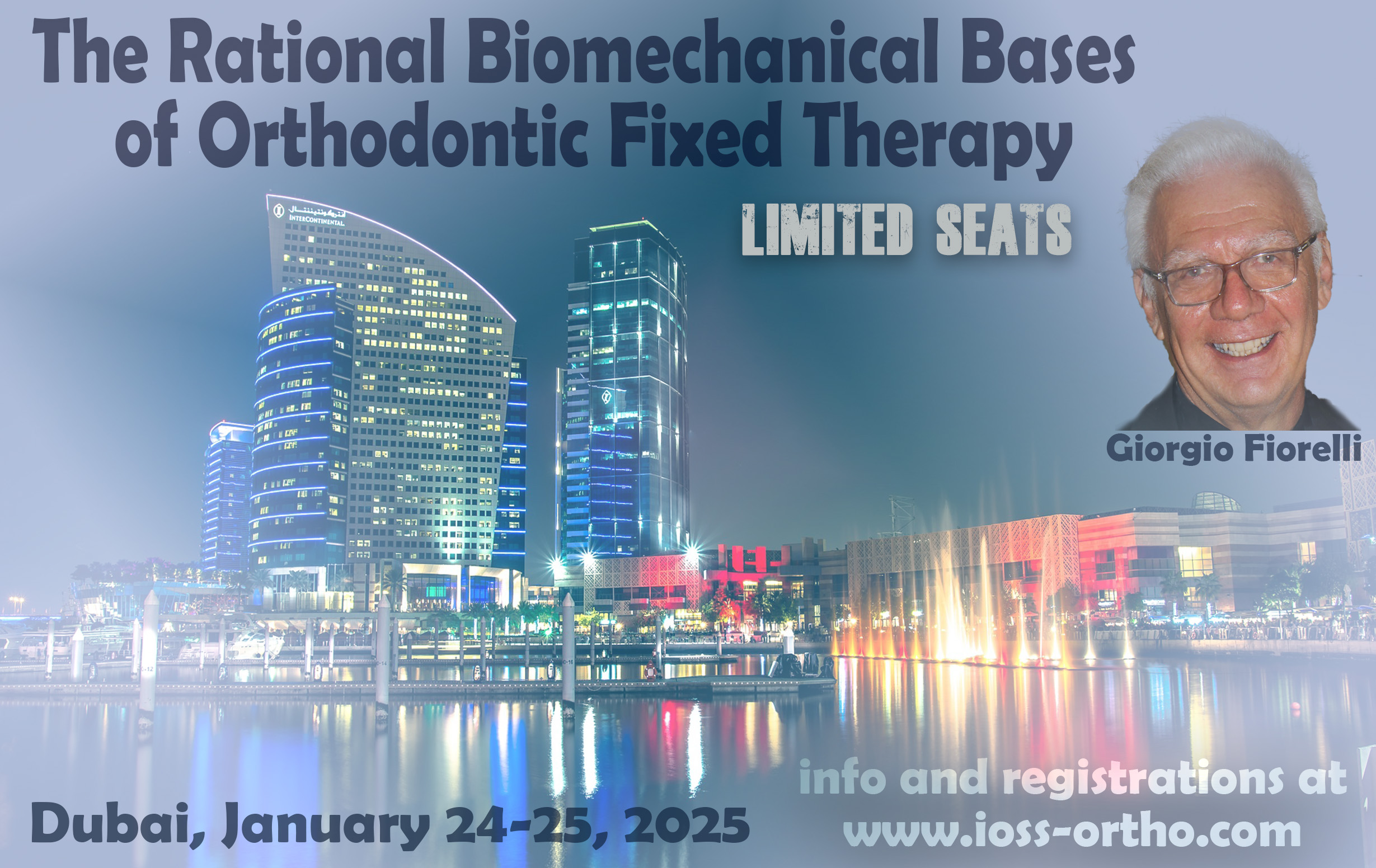
Program for a two-day introductory course in clinical biomechanics.
Ask yourself this question: "During an average orthodontic treatment, which is the maximum dental displacement you perform?" A reasonable answer would be a couple of millimeters. In complex cases, we have sometimes movements of 4 or 5 mm. Very seldom do we go beyond these values.
Now we know that biologically it is possible to move teeth even at a speed of 1mm per month. Isn't it strange that the average orthodontic treatment is more than 2 years long? Is there an efficiency problem in our appliance mechanics? Biomechanics can help you in getting an answer.
The deep knowledge of biomechanics is an invaluable asset for any orthodontist, since any kind of orthodontic therapy, whatever technique or approach is used, can deeply benefit from it. The knowledge of biomechanics allows for a real understanding of the therapy we perform every day, making our appliance effects predictable and letting us understand the reasons for our possible mistakes. A deep knowledge of biomechanics allows the orthodontist to design specific, tailor-made appliances, which you may need to solve problems with a special degree of difficulty.
In this course, we would like to introduce you to a new way of seeing and understanding your everyday orthodontic therapy. It can be a first step that can lead you to break many limits you thought impossible to overcome.
Course Outline
Day one
Introduction: why it is important to have a deep biomechanics knowledge, limits of standard protocol therapies, and the need for custom mechanics design.
The 5 pillars: Treatment goal, Needed Force System, Anchorage Evaluation, Stage Definition, Appliance Design. How this sequence can lead to build a better appliance for your patients.
The Occlusogram Procedure: How to evaluate different treatment goals and scenarios, and how this will bring you to see the needed movement.
The Dental Movement Analysis: How the movement can be related to a force system. Very Short introduction to mechanics fundamentals.
The Anchorage Management: How we can evaluate our anchorage needs, and how we can increase anchorage without the use of TAD’s. When is skeletal anchorage needed, and which is the best approach for it?
Day two
Cantilever Mechanics: Creative and predictable mechanics that can be used for any problem.
Statically Indeterminate Mechanics: Understand how the wire/bracket system works and its limitations of use.
Workshop
Bending cantilevers for different dental movements.
NOTE: The course venue will be announced shortly.
Course Fees
Before Dec 15th, 2024
CHF 470 (AED 2010)
From Dec 15th, 2024
CHF 550 (AED 2350)
Students Before Dec 15th, 2024
CHF 360 (AED 1540)
Students From Dec 15th, 2024
CHF 420 (AED 1800)
The course fee includes coffe breaks and lunches,
For the workshop, doctors are required to bring their own instruments.
(To Access the Registration Page you need to be registered and logged in the website).
